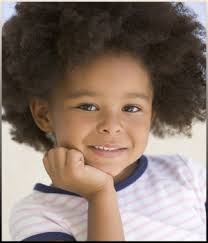Knowing your
curl type and how to care for it could be the make it or break it between good and
bad hair days. We are much like little
snow flakes and although they are all equal, no two heads of hair are the
same. This is why an absolutely amazing
product can work fabulously for one child and be completely useless on
another. With that being said – here are
a few basic tips to understanding your curl type and navigating the beauty isle
of your local drugstore, beauty supply or favorite online curly product
hangout.
The 3 Basic Types of Curl
The WalkerSystem of categorizing hair is well known, and sometimes a little controversial
in the curl world, but for your sanity and hair success – it is well worth
knowing. Just because you know it, it
does not mean you have to refer to it constantly.
With that
being said, however, many product sellers will refer to it a lot in order to get their market base to understand who exactly
their product is for and how it should be used.
(I generally do not refer to it in speech and opt for more neutral
descriptive terms, but often refer to it in writing so that a fellow curly
knows what on earth I am talking about, for real.)
There is a
far more detailed description of the Walker hair typing system on the link in
the paragraph above – but if you are short on time or attention ;) - here is a little primer for each hair
category and what it needs without turning this into a science project:
Type 2’s
Ranges from
slightly to very wavy hair, possibly with really loose curls or ringlets. Here are some pictures of your compadres:





This hair
type benefits from sulfate free
shampoos, lighter conditioners for those with fine hair and thicker conditioners for those with
thicker/ courser hair and ringlets.
The best styling products for
you would be lightweight mousses and gels
that can define hair and minimize frizz without weighing your hair down or
leaving it feeling greasy or crunchy.
Type 2 hair
tends to lie flat to the head and is the easiest to blow dry straight or coax
into curlier styles. Creating volume at
the scalp and controlling frizz are the biggest challenges to this hair type.
Type 3’s
This is a
very obviously curly hair type characterized by fuller more defined curls. The curl pattern ranges from twirly, spirally
hair and ringlets to tighter corkscrew and coily curls. A lot of biracial people with one or more
parents with African, Middle-Eastern, Jewish or Latino descent fall into this
category, as do many without multiple heritage.
Here are a
few pictures showingtype 3 hair .


Again as with all curlies, sulfate-free cleansers are your friend. This type tends to benefit from less frequent washing, thick, rich, conditioners, leave in conditioners, and creams or gels for added definition and control. The thicker and tighter curl types also love butters and oils and protective styling (there is a blog dedicated to that too.)
The biggest
challenges for this hair type are moisture retention, frizz control and curl
definition.
Please note that this type of hair is
very prone to changing texture from infancy, to toddlerhood and then on to
adulthood. Type 4’s too. It is also common for mostly 3 and 4 children
to have a range of curl patterns and hair textures in different sections of
their hair. Even more fun. Check out our blog on dealing with multiple
textures on one head of hair.
Type 4’s
This hair
type is definitively coily and is what first comes to mind when you think of
natural African hair. It goes without
saying that type 4’s are the best equipped curlies to rock afros and protective
styles. It ranges from defined tight,
springy curls to more of a zig zag curl pattern.
Here are some type 4 hair images for you.




Here are some type 4 hair images for you.
Because it
has fewer cuticle layers than other types of hair, it is the most susceptible
to damage from over-manipulation , including combing and especially brushing,
direct heat (blow drying and flat irons) and chemical straightening.
Type 4’s
benefit greatly from creamier shampoos
and co-washing (washing with conditioners alone) that are super rich with
lots of slip. This hair texture also loves pre-shampoo treatments, hot oil
treatments, oil rinses and regular deep conditioning sessions. The best
styling products for Type 4’s are hair butters, rich leave-in conditioners,
heavy creams and hair milks. Protective
styling is usually essential for the healthy maintenance of this hair type.
Protective styling will encourage growth/ length
retention, help with creating curl definition and elongation and protect
against frizz. Shrinkage (up to 75% is
common) is characteristic of type 4 hair.
Moisture retention and breakage are some of the more common challenges
that are faced by caregivers of coily hair kiddos.
For specific
product recommendations on your hair type, please visit Naturally Curly’s
awesome website. They even have an
online marketplace, Curlmart, exclusively dedicated to the needs of curly and
coily people. I love it when we are not just a side bar in
the hair aisle. Ingredients of all
products sold are fully disclosed, and the reviewers often state what hair type
they have, which gives a better idea of whether the product might work for you
or not.
For Oggboo
product recommendations specifically, visit the product guidance page on our
website and subscribe to our newsletter for maintenance and styling tips, sale
notifications, DIY tips and new product releases.
No comments:
Post a Comment